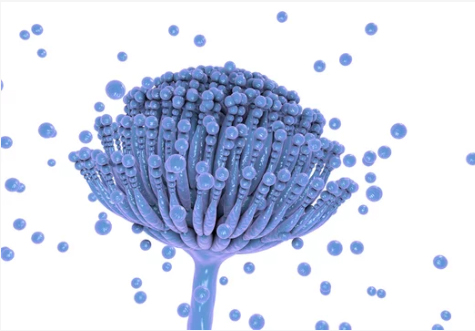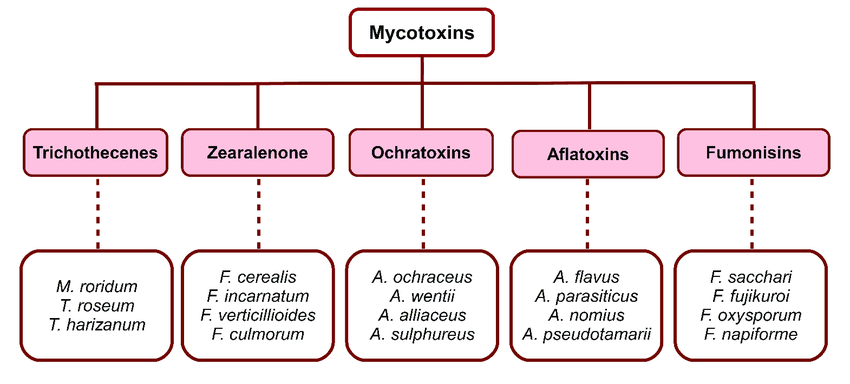
As molds grow, some (but not all) of them may produce potentially toxic byproducts called mycotoxins under some conditions. Some of these molds are commonly found in moisture-damaged buildings. More than 200 mycotoxins from common molds have been identified, and many more remain to be identified. The amount and types of mycotoxins produced by a particular mold depends on many environmental and genetic factors. No one can tell whether a mold is producing mycotoxins just by looking at it.
Mycotoxins and Mold
Some mycotoxins are known to cause severe adverse health effects in humans and pets, but for many mycotoxins little health information is available. Research on mycotoxins is ongoing. Exposure to mycotoxins can occur from inhalation, ingestion and skin contact. It is prudent to avoid unnecessary inhalation exposure to mold. The 5 most common mycotoxins are trichothecenes, zearalenone, ochratoxin, aflatoxin, and fumonisins.

Endotoxins and Mold
Endotoxins are toxins (poisons) that are released by gram-negative bacteria into the environment, which are toxins kept within the bacterial cell and are released only after destruction of the bacterial cell wall. The bacteria that produce endotoxins grow alongside fungus / mold in indoor water damaged environments. Theses gram-negative bacteria harbor in the human digestive tract and are a source of inflammation in the gut and in other parts of the body.
Endotoxins have been documented to cause inflammation throughout the body, onset clinical diabetes, obesity, nausea, vomiting, diarrhea, fever, disseminated intravascular coagulation, vascular collapse, and organ failure.